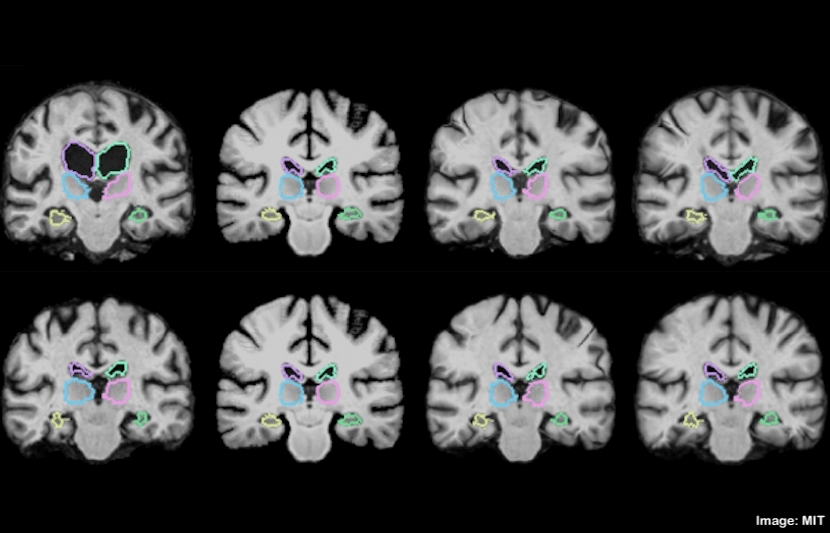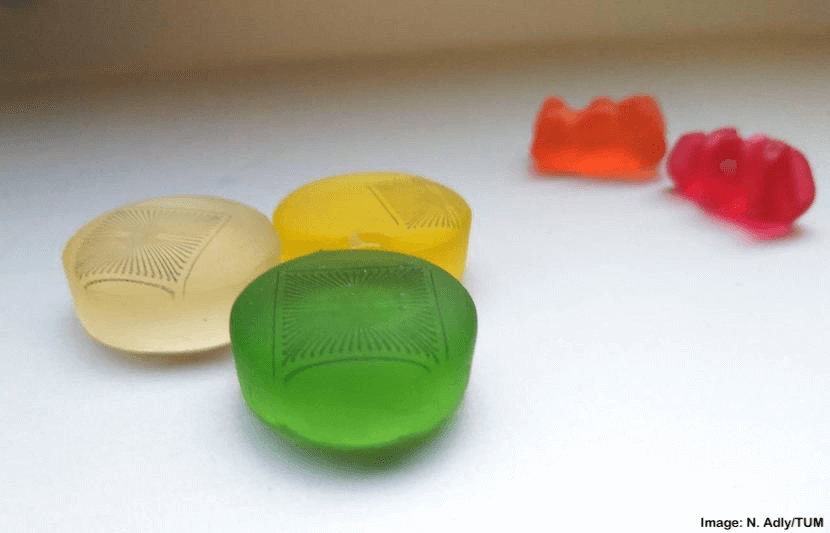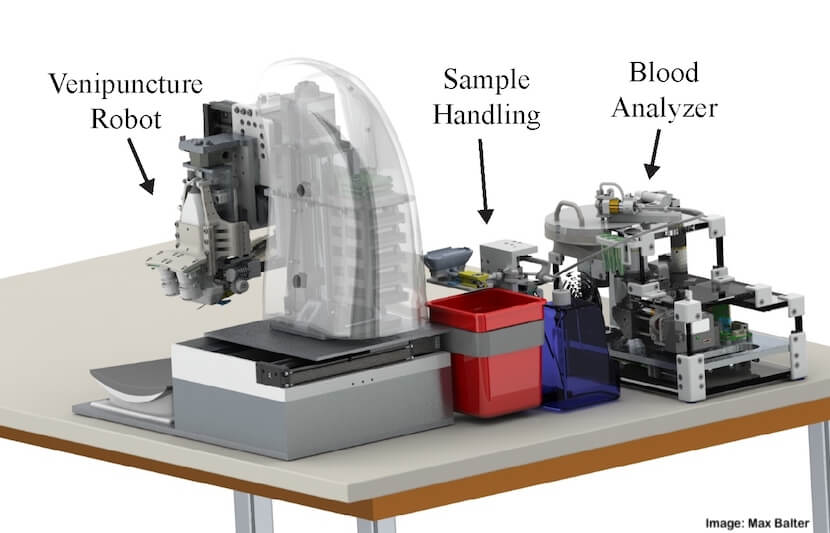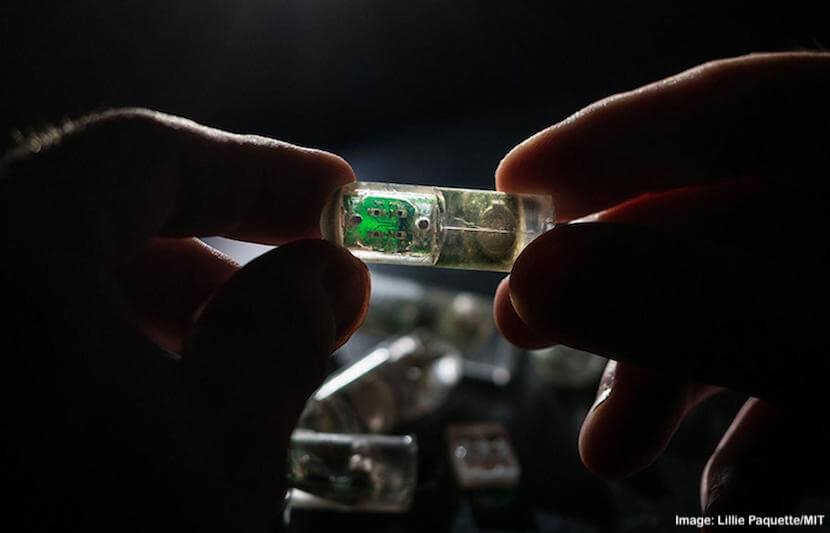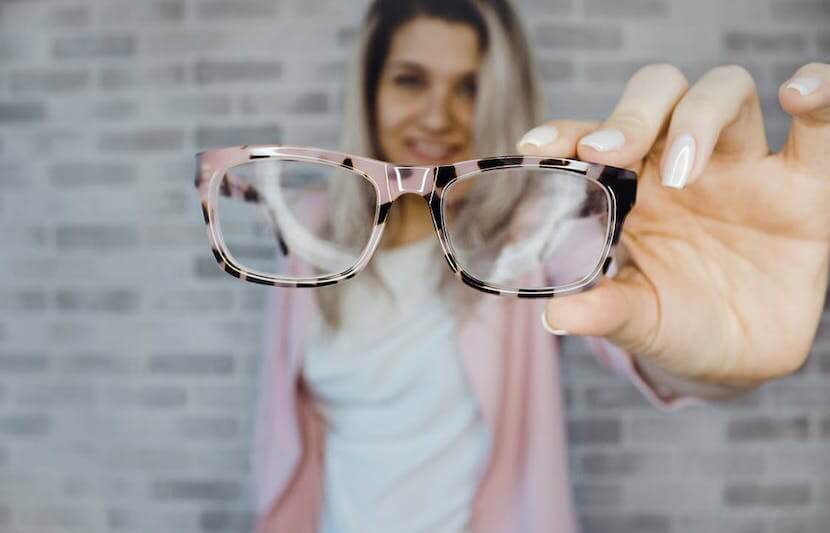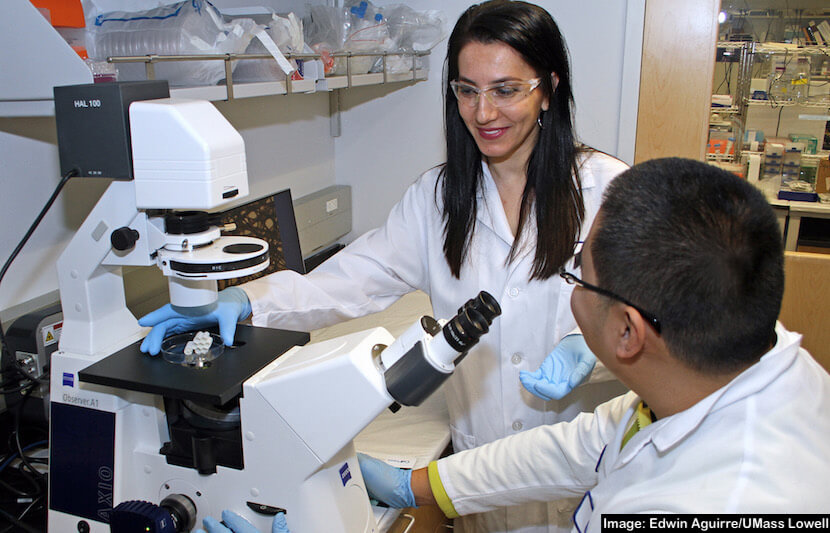-
New Algorithm Makes Analyzing Brain Scans 1,000 Times Faster
MIT researchers have built a machine-learning algorithm that can register MRI scans and other 3D images, and compare and analyze them in a matter of seconds. This reduces the traditional runtime of two hours or more down to just a second. Medical imaging, including MRI and CT scans, is not only a medical breakthrough, allowing… Read More
-
Scientists Print Medical Sensors onto Gummies
After nearly 100 years of satisfying the taste buds of kids and adults, alike, gummi bears may finally have a greater purpose. A team of researchers has developed a method to print microelectrode arrays onto gummy candies, gelatin and other soft substrates. This new method will provide a cheap, fast way to develop microelectrodes that… Read More
-
Automated Robot Speeds Up Blood Draw and Diagnosis
Researchers at Rutgers University have developed an automated robotic device that can quickly draw blood and provide diagnostic results. The device could improve workflow in health-related institutions, allowing practitioners more time to treat patients. A paper describing the device is published in the journal Technology. “This device represents the holy grail in blood testing technology,”… Read More
-
Orange Peels Hold Secret to Design of Safer Bridges, Emergency Inhalers
According to researchers at the University of Central Florida (UCF), the secret to constructing safer bridges or creating effective vehicles for delivering airborne medicine may lie in a familiar, but unexpected place — the peels of oranges. When an orange is squeezed, microjets in the peel release a thin stream of fragrant oil. Through an… Read More
-
Essential Oils to Be Used as Antibiotics
Applying tea tree oil or other natural plant extracts as a coating for medical devices could prevent millions of bacterial infections each year, according to researchers from James Cook University in Australia. The discovery comes at a time when an increasing number of unplanned surgeries are performed to fight infections caused by biofilm, a thin… Read More
-
Ingestible Sensor Can Detect Stomach Bleeding, Disease
MIT researchers have developed an ingestible sensor that can detect stomach bleeding or other gastrointestinal problems, and relay the information to a nearby smartphone. Working in the field of synthetic biology, the researchers infused an electronic sensor with genetically modified bacteria that can emit light in response to blood and convey the information via wireless… Read More
-
New Method Can Permanently Correct Vision Without Surgery
Researchers at Columbia University have developed a non-invasive technique to permanently correct nearsightedness, a common vision problem already affecting nearly half of the U.S. population. The study is published in Nature Photonics. The problem Although we don’t know what causes it yet, nearsightedness, or myopia, is an increasing problem around the globe. According to the… Read More
-
Do Common Vitamins and Minerals Really Help Your Health?
Do you take general vitamin and mineral supplements each day? You may not need to, according to a new study led by St. Michael’s Hospital and the University of Toronto. The researchers found that the most commonly used vitamin and mineral supplements, including multivitamins, vitamin D, calcium and vitamin C, don’t provide any consistent… Read More
-
Researchers Grow Human Tissue Cells in Origami Papers
Dating back to the sixth century, the Japanese paper art of origami is making its modern comeback, not in arts and crafts, but in an engineering lab. Researchers at the University of Massachusetts Lowell are using origami papers to develop biomaterials that could be used to repair, replace or regenerate human body tissues and organs.… Read More
-
A Healthy Stomach Proven Critical to Fighting Disease
We must look inward to treat chronic diseases such as cancer, obesity and autoimmune disorders, according to a biologist from Oregon State University-Cascades. That is, to our guts. The paper is published in the Quarterly Review of Biology. The human ecosystem Inside every man and woman are trillions of bacterial cells that perform valuable functions… Read More
-
Tiny Ultrasound-Powered Robots Remove Harmful Bacteria From Blood
Engineers at the University of California San Diego have developed microscopic robots that can swim through blood and remove harmful bacteria and toxins. These nanorobots are about 25 times smaller than the width of a human hair, and could lead to an efficient and safe way to decontaminate biological fluids in the body. The research… Read More
-
3D Printing Bionic Limbs Allows Kids to Be Kids Again
Every year, thousands of children in the U.S. are born without arms, limiting their development and affecting their quality of life. But now, there is hope that they can receive affordable and customizable prosthetics, capable of boosting their growth and potential. Their savior is a team of researchers from Limbitless Solutions, a non-profit group at… Read More
-
Treating Diseases by Using Light to Switch Calcium Influx On or Off
Optogenetics, a biological technique that uses light to control and manipulate cell behavior, has steadily grown into one of the most promising methods over the past decade. The technique uses light to turn particular genes on or off, triggering certain biological functions. Researchers at Texas A&M University are exploring ways to use optogenetics to control… Read More
-
Smartphone Reader Takes Guessing Out of Infection Diagnosis
Researchers at Washington State University have developed a low-cost, pocket-sized laboratory that works nearly as well as clinical laboratories to detect common viral and bacterial infections. “This smartphone reader has the potential to improve access and speed up healthcare delivery,” Lei Li, assistant professor in the School of Mechanical and Materials Engineering at WSU and… Read More
-
New Laser Device Paves Way for Diagnosing Diseases Through Breath Analysis
A team of researchers led by the University of Central Florida (UCF) has developed an infrared laser device capable of detecting any molecule in the air. With this device, people can look for traces of air pollution, global warming gases and chemical agents, conduct medical breath analyses, and even use the device to look for… Read More


